So You Think You Can Roast?
This morning we started with a great breakfast and were provided the coffees for this years roasters challenge: “So You Think You Can Roast?” It featured 5 different Brazilian coffees:
- Coffee 1 is from thecafundo. Aboard region fazenda cafindo estate.
- Coffee 2 is one we are very familiar with from the Brazil Cerrado region Morenonha Formosa estate.
- Coffee 3 is from the Expocaccer cerrado Itda cooperative
- Coffee 4 is Carmine de Mona’s Fazenda Sertao estate.
- Coffee 5 …and a Brazilian robusto just to add a little trouble in the mix.
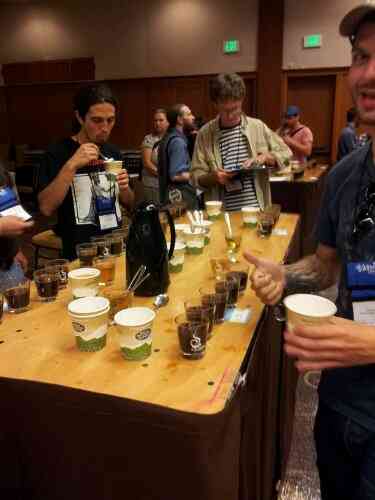
We were all assigned to a team of 12 or so attendees each with the goal of roasting and cupping each coffee to create the best coffee we could. Think of it like the iron chef of coffee.
We were also asked to come up with a team name. As we threw ideas around we realized we hadn’t meet one teammate named Nick so we quickly arrived on a proper team name “Missing Nick”
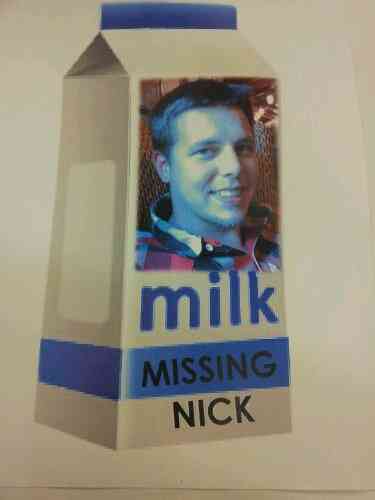
Needless to say he was found and is a great guy. 🙂
We had an opportunity to cup each coffee and develop a strategy for our final presentation to the judges.
We had many different manufactures of roasters to use at our disposal in the effort to bring out the taste profile we wanted for each coffee. It was fun and challenging to work on machines we don’t use everyday.
We were able to complete some batches and found a few we are looking forward to finalizing the blend tomorrow.
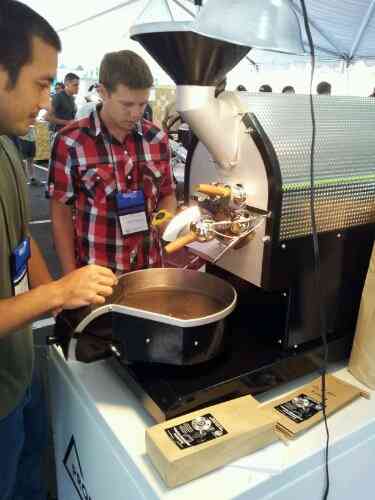
A Roaster’s Roundtable
We then moved to a roundtable discussion on how we as roasters can learn from other craft industries and foster collaborations by delivering an authentic experience, what language we need to develop in discussion of quality coffee and about creating an audience. We also discussed everyday sustainable practices we can use in our store and roastery, and the topic of cupping vs tasting vs enjoying focusing on our vocabulary, brewing process, and accuracy of tasting coffee to reflect coffees’ true character. We finished up today’s sessions with a great presentation on how coffee becomes stale, what methods are preferred to help prevent coffee from prematurely becoming stale and at what point is that evident in the coffees’ taste. Not surprising everyone could see a marked difference with coffee roasted longer than 10 to 14 days ago. So that’s why we work hard to serve our coffee just a few days after roasting. So you can enjoy fresh coffee as it’s meant to be.
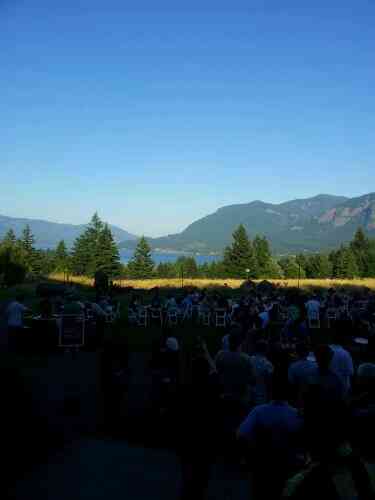
We finished up the evening with a great dinner on the front lawn with a great view of the Columbia River.
We still had some time to do a few batches of coffee we wanted to have ready for tomorrow.
And we met over the cupping table to make our game plans for the final blend to submit for judging.
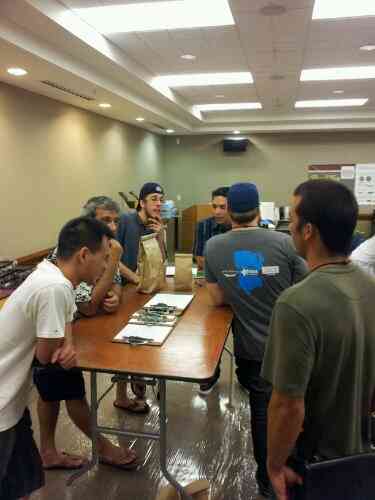
Cross your fingers and I’ll let you know how it goes soon!


